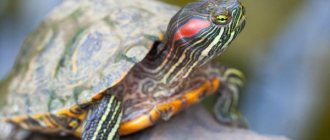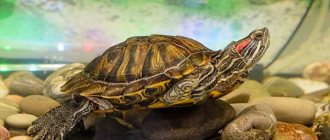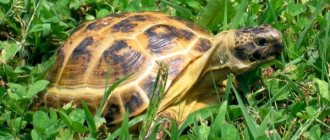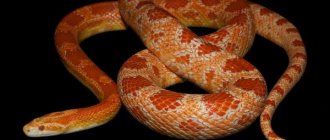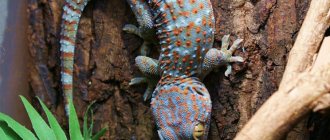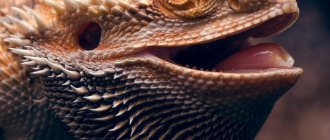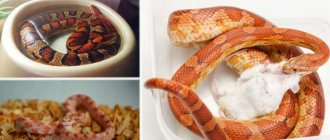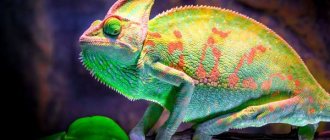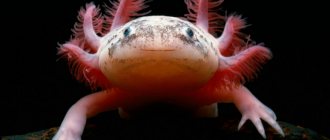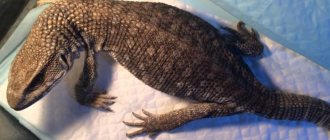Aquarium lovers value amphibian pets not only for their appearance. It’s interesting to watch them, and if there are children in the family, it’s also educational. If you know how to care for a red-eared turtle and follow the recommendations for its maintenance, the turtle will delight you for several decades.
The phenotypic feature of the turtle, manifested in its amazing color, red oblong spots on both sides of the head, similar to ears, gave the name “red-eared” to this subspecies of turtles.
Reptiles such as red-eared turtles do not require much time to care for and keep at home.
Selection and purchase of a red-eared turtle
In captivity, even with ideal care, turtles live up to 40 years.
When choosing this type of amphibian, you must be completely sure that you will cope with the responsibilities and the animal will not become a burden to you. When choosing a water turtle, take into account all the nuances of its maintenance. When purchasing, you need to choose a healthy individual, for this you need to take into account the following conditions:
- The size is at least 5 cm. This means that the turtle has already survived a difficult period in which most babies die;
- The integrity of the shell, its strength, without dents and tubercles, the presence of all claws and tail;
- When selected from an aquarium, the individual must be active, although if there is a suspicious movement, the turtles may hide and freeze; it must swim smoothly and not on one side;
- The eyes are shiny, the skin is without plaque, scratches, wounds, or white spots;
- The water in the aquarium should be of medium transparency, or preferably clean. Babies have a hard time with dirt and may have a fungal or bacterial infection that will be carried into your new aquarium.
Please note that an adult reaches its maximum size at 3 years of age.
This is 30 - 35 cm. Often, careless sellers, showing babies of five centimeters, pass them off as a dwarf.
Description
The red-eared or yellow-bellied turtle belongs to the American freshwater turtle family. The first mention of it was discovered by scientists in the Chronicles of Peru, dating back to the mid-16th century. The author of the treatise calls this amphibian Icoteas and compares it with Galapogos species.
The sizes of all types of red-eared turtles are in a fairly wide range - from 21 to 60 cm.
The horny shell with a bone base - the carapace - is covered with wrinkles and its color changes with the age of the individual from light green, gray or yellowish to almost black.
There are two spots behind the turtle's eyes. In some varieties they are dark, in others yellow or red. There may be reddish or yellowish lines or patterns on the head. The bony belly is predominantly bright yellow in color, with dark markings.
Individuals grow very unevenly. In the first 18 months of life they reach 7.5-8 cm, then the rate slows down and is limited to 1.5 cm per year. But this freshwater family is definitely not a dwarf. The size of some specimens even at two years of age is more than 20 cm.
The red-eared turtle has practically no voice, but it still makes some sounds - it can hiss or snort when excited, or squeak with pleasure. Hearing is also very poorly developed. But the sense of smell and vision allow you to react to the slightest irritants and quickly swim away at the slightest sign of danger.
This amphibian family lives a long time, although the lifespan varies greatly depending on the variety - from 30 to 80 years. On average it is 45 years.
Photo gallery of red-eared turtles:
Aquarium design and maintenance conditions
Arrangement of the aquarium
The red-eared turtle is an amphibian, and therefore it is necessary to arrange an aquarium for red-eared turtles so that 1/3 of the aquarium is occupied by land. It should be a relatively large aquarium as she will grow larger in a couple of years. For one individual you need a volume of 100 liters. There are special models with irregular geometry, where one side is lower; their installation requires a special stand.
The water height for the red-eared turtle should be at least 40 cm. But part of the aquarium territory should be shallow so that the turtle has the opportunity to sit in the water, and at the same time its head is above the water.
For these purposes, you can arrange a slide inside of stones - pellets. They should be smooth. Small pebbles will do.
A small area of land can be decorated by making a glass shelf, the main thing is that you also need to sprinkle pebbles on it.
Lighting of the reptile's place of residence should be considered separately - if the terrarium is located near a window, there will be enough light, but if in a darkened part of the room, you need to organize a separate light source. This reptile loves light and warmth, these are the two most important things for it.
Once the redfish gets comfortable, you will notice that it is trying to get out of the aquarium. This attempt must be stopped immediately. If the sides in the land area are low, you need to think about a special lid, and most often, it is needed only over part of the land. She will not be able to get out of the water, where the edge above the water surface is at least 10 cm, but she will not stop trying to do so.
Children will be tempted to hold it in their hands, and you should warn them that it bites quite hard. Handle it less, this will make the adaptation process more painless.
Temperature and water quality
This is an important part of the conditions of detention, and neglect of them can not only harm the health, but also kill the animal.
Necessary:
- Once every three days, dilute the water in the aquarium with water that has stood for at least 3 days. There is no need to change all the water, it is enough to replace 1/3 of the volume;
- Maintain temperature from 23 to 28 degrees. Special heating devices with an automatic thermometer will help with this. If the temperature is low, the turtle will begin to prepare for sleep, but without accumulating enough calories, it may not wake up again;
- Remove obvious contamination, do not overuse food, so that putrefactive processes do not begin in the water;
- Install a water filter, it will make life much easier for the inhabitants
Water for red-eared turtles at home can be used from the tap, but it must be left in an open container for at least three days. This is necessary so that volatile substances added to the system, such as chlorine, evaporate from the water.
Remember that there should always be clean water in the aquarium, excrement must be removed, and it is enough to remove the inhabitant once a week and wash with clean water. Wash the shell with a soft cloth, but remember that it bites. Clean the decorations, but be careful not to get any cleaning products into the aquarium.
Aquarium decorations
The red-eared turtle remains a predator at home. If you decide to decorate her house with living vegetation, she will definitely try it and eat it as a result. A decorative plastic bush will suffer the same fate.
For this purpose, you can make a double glass back wall. The main thing is to leave a small gap at the bottom, or drill small holes.
Behind this wall you can keep fish, which, like vegetation, cannot be kept in the same container with the turtle. The size of the holes should be small so that the fish cannot get into someone else's territory or get stuck in them.
Artificial driftwood looks organic, and with their help you can make a platform for reaching land, but for this purpose you need to use special artificial materials. In no case should you adapt wood for this - it will rot in water, and if it is treated with special preparations, it will release harmful substances into the water.
Important: Give maximum attention to the contents of the turtle's aquarium - make sure that there are no elements in it that will injure it, as well as small stones that it can swallow.
Subspecies
There are 13 subspecies of the red-eared turtle, but only 3 of them are the most famous and widespread:
Florida or Red-eared Slider
The dimensions of this main species, also known as Elegant, reach 30 cm, and its postorbital narrow stripe is reddish. All yellow abdominal plates have bright dark spots.
Yellow-bellied slider
Its plastron (abdominal shell) is more oval in shape, the plates are dark, with yellow spots and the same line along the edges.
Trusty or Cumberland species
This is the smallest red-eared turtle, its maximum size is 21 cm. The stripe behind the eyes is usually yellowish and narrow, and on the chin it is wide. There are patterns on the shell that resemble a scattering of black dots or peculiar eyes.
There are also interspecific hybrids.
Feeding baby turtles
Small turtles are a big responsibility, and it is worth feeding them correctly. It is better to use specialized food for them. If possible, you should consult a veterinarian and choose the best option.
As feed for babies, you can buy earthworms, bloodworms, and squid meat. They need a raw product - only they have the amount of protein they need.
The size of raw food should take up 2/3 of the total diet!
A turtle's diet should consist of three parts:
- Complementary feeding with ready-made mixtures;
- Animal protein – fish, meat, seafood;
- Vegetation, vegetables.
As the turtle grows, feeding should be carried out according to the following scheme:
- In the first year of life - daily;
- Second year – after 2 days;
- Next years – in 3 – 4 days.
Important! Pay attention to how much the turtle eats, and next time give it no more food than that.
Water in the aquaterrarium
The turtle spends most of its time in water. This is where she sleeps, eats and defecates. The water quickly becomes dirty and begins to smell unpleasant, so the aquarium definitely needs a good filter and frequent water changes.
There should be enough water in the aquarium for the turtle to swim and roll over. In general, the more there is, the better. The water being replaced must be settled. Comfortable water temperature is 22-28 degrees. If its temperature drops below, install a heater.
Nutritional conditions of adults
When keeping a red-eared slider at home, you should know that they feed in water. That is, the food will have to be poured directly into the aquarium. Monitor what she has eaten and remove any leftover food. Some breeders organize a special separate container for this purpose. The pet is fed in it, waits for a bowel movement, and is transferred back. At this moment it is very convenient to immediately take care of the owner of the aquarium.
Adults happily eat bloodworms, squid, and meat. You can give thawed frozen fish along with bones - this will solve the problem of calcium deficiency. Perch fish, if it is large enough, should be disassembled and the rib part of the bones removed, and the spine simply cut. Fish bones are a must in the diet. Shrimp are an excellent way out, since reptiles need chitin, which is contained in large quantities in the shell of shrimp. Also, your pet can be treated to special crustaceans, and you should not be afraid of their hard house.
Raw liver should be given once a week; if your pet enjoys eating it, you need to reduce the dose of vitamins. This point, as well as the question of the amount of vitamins required for your pet, should be discussed with your veterinarian.
It is also necessary to include plant foods in the diet, this could be fresh cabbage, spinach, and greens. The main thing is to wash the plants thoroughly.
You can tell that a turtle is hungry by its behavior. A hungry turtle rummages through the rocks, actively explores the corners of the aquarium, and behaves restlessly compared to its usual state, at a time of day when it would usually be asleep.
UV irradiation
One of the biggest problems of little red eared cats is calcium metabolism disorders (gastric tympany, rickets, hyperparathyroidism). The reason for this is the lack of UV radiation. It is vital for small and adult turtles to receive a sufficient amount of ultraviolet rays, because if they are deficient, vitamin D3 is not absorbed in the required amount from food. The synthesis of vitamin D3 in the skin under the influence of ultraviolet radiation is the main source of this vitamin in the turtle’s body.
Repti Glo 5.0 lamp for ultraviolet irradiation.
Therefore, in addition to the incandescent lamp, a special UV lamp for animals in temperate climates (Repti Glo 5.0, Repti Zoo 5.0 or any other terrarium UV lamp with a UVA content of 5%) should be installed above the island. Both lamps (incandescent and UV) should shine for 8-12 hours a day. They need to be turned off at night. The UV lamp must be replaced regularly; the period of effective operation is indicated by the manufacturer on the packaging.
How to wash a red-eared turtle
Caring for the red-eared turtle at home is quite simple. It is important to keep it clean so that pathogenic organisms do not collect under the carapace and plastron.
In this case, you should not wash the turtle with detergents or use human hygiene products. It is also strictly not recommended to wash it under the tap - in this case, the animal suffers very unpleasant sensations.
It is most convenient to wash the turtle in a separate container, in properly settled water, using appropriate products sold in pet stores specifically for hygiene procedures for turtles.
Natural habitat
It's wide enough. The red-eared slider can be found in many areas of the United States of America - Virginia, Florida, Oklahoma, Kansas, New Mexico, Arizona, North and South Carolina, Georgia, Alabama, Louisiana, Mississippi, Indiana, Illinois, Kentucky. In addition, this amphibian lives in Mexico, Colombia, Venezuela, and many other countries in Central and South America.
Currently, the yellow-bellied turtle has spread widely throughout the world. It can be found in Guadeloupe, Israel, Singapore, Vietnam, South Africa, Japan, Thailand, Malaysia, Hawaii, even in some European countries, such as Spain and England.
In Australia, the red-eared turtle is considered a pest, as it actively eradicates native flora.
In Russia, this species is already found in many ponds in the central part of the country, for example, in the Moscow region (Tsaritsynsky, Kuzminsky, Altufevsky, Dzhamgarovsky).
Thus, this amphibian showed high adaptability to new conditions and survival.
Hibernation
Most hobbyists are interested in the question: how long do red-eared turtles sleep? Few people want to watch a motionless animal for six months. This reptile usually does not go into suspended animation if properly cared for.
Keeping a red-eared turtle is a year-round process; wintering for the turtle occurs only when the temperature drops. If the temperature drops to 18–20 degrees, freshwater fish begin to freeze and become less active. This is why it is necessary to constantly monitor the water temperature. In its normal state, it sleeps very little, while the sleeping red ear reacts to movement in the room and light.
Red-eared turtles very rarely go into deep hibernation at home, and only because of the dishonest attitude of the owners!
The red-eared slider easily adapts to home conditions, is undemanding, and most importantly, active. Keeping a red-eared turtle, observing its life, and caring for it will bring you and your children many pleasant experiences. This reptile will become a member of the family and will delight you for many years.
Interesting Facts
- Red-eared turtles breathe atmospheric air, so they are always forced to rise to the surface of the reservoir.
- Amphibian reptiles will sooner or later eat any fish if you try to keep them together.
- The sex of the red-eared slider is formed after fertilization and depends on developmental conditions. Up to +27 °C males hatch, above +30 °C only females hatch.
- In the range of +27…+29 °C or with frequent temperature changes, both male and female individuals can hatch.
- At the edge of the red-eared slider's plastron there is a strange formation - this is a trace of the yolk sac, which served as a source of food for the embryo.
- Fishermen specifically look for clutches of red-eared turtle eggs, as they are an excellent bait for schools of large fish.
- In the Mississippi River Valley, small turtles are captured en masse and sold to pet stores. This is a legitimate business. But the population does not suffer from this, as a lot of these amphibians are born.
- Wild turtles are quite aggressive and can bite humans painfully. But domestic specimens treat household members with patience.
- Although scientists believe that these amphibians are not able to distinguish many sounds or get used to people, they sometimes demonstrate miracles of training.
Some safety tips
The red-eared one only outwardly seems to be a harmless creature. In fact, if you handle it incorrectly, you can run into very serious problems. In order for communication with your pet to bring only joy, you need to remember the following safety measures:
- use of protective gloves when in contact with an animal - pets are not the type to sit on hands, and therefore when the owner picks up the animal, it squeaks and begins to actively resist. The reptile tries to bite and scratch, which without hand protection leads to serious injuries;
- washing hands after contact with a pet - living in an aquatic environment, turtles can be carriers of specific bacteria. When they penetrate the human body, there is a risk of developing intestinal disorders and general malaise. Some red-eared cats also carry salmonellosis, which can be fatal to humans if left untreated. Washing your hands with soap completely solves the problem of possible infection;
- avoiding washing your pet in the kitchen sink;
- Avoid washing animal care equipment and aquariums in the kitchen sink.
In a house where there are small children, you need to make sure that they do not interfere with the animal. The pet's jaw is very strong, and if the baby's finger accidentally gets into the reptile's mouth, it can bite it off.

